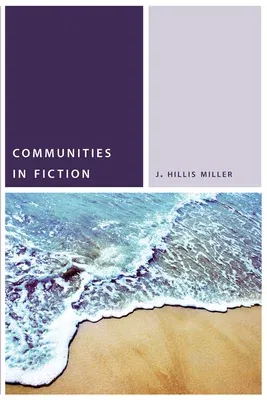Communities in Fiction reads six novels or stories (one each by
Trollope, Hardy, Conrad, Woolf, Pynchon, and Cervantes) in the light of
theories of community worked out (contradictorily) by Raymond Williams,
Martin Heidegger, and Jean- Luc Nancy.
The book's topic is the question of how communities or noncommunities
are represented in fictional works. Such fictional communities help the
reader understand real communities, including those in which the reader
lives. As against the presumption that the trajectory in literature from
Victorian to modern to postmodern is the story of a gradual loss of
belief in the possibility of community, this book demonstrates that
communities have always been presented in fiction as precarious and
fractured. Moreover, the juxtaposition of Pynchon and Cervantes in the
last chapter demonstrates that period characterizations are never to be
trusted. All the features both thematic and formal that recent critics
and theorists such as Fredric Jameson and many others have found to
characterize postmodern fiction are already present in Cervantes's
wonderful early-seventeenth-century "Exemplary Story," "The Dogs'
Colloquy." All the themes and narrative devices of Western fiction from
the beginning of the print era to the present were there at the
beginning, in Cervantes
Most of all, however, Communities in Fiction looks in detail at its six
fictions, striving to see just what they say, what stories they tell,
and what narratological and rhetorical devices they use to say what they
do say and to tell the stories they do tell. The book attempts to
communicate to its readers the joy of reading these works and to argue
for the exemplary insight they provide into what Heidegger called
Mitsein-- being together in communities that are always problematic and
unstable.

